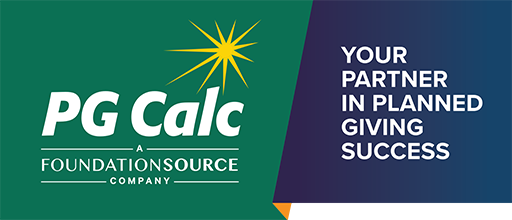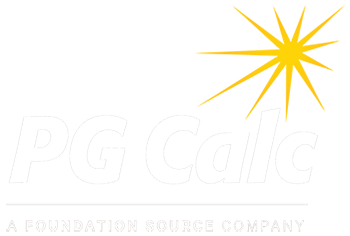
In simple terms, the purpose of an endowment is to provide a source of consistent financial support that keeps pace with inflation so that the organization can deliver the same level of charitable work in the future as it does now. Endowment funds are a powerful tool for nonprofit organizations because they provide financial stability to facilitate long-term planning. They also allow an organization to weather the vagaries of the economy and ups and downs in the investment markets. An endowment provides a stable foundation for the implementation of strategic plans. And they allow organizations to escape hand-to-mouth budgeting, which is often a consequence of overreliance on dues or fees, or when current fundraising is fully committed to immediate use.
In short, endowment funds empower nonprofits to invest in their own future and enhance their mission.
What exactly is an endowment?
For nonprofit organizations, an endowment is often a collection of individual funds, usually pooled for investment purposes, that is invested for future use. Generally, the charity spends from the investment return earned by the endowment’s investment assets, which preserves the value of the underlying principal. In an ideal scenario, an endowment fund distributes enough to cover a meaningful portion of the operating costs of the organization. In fact, an endowment fund usually distributes less than its net total return (capital
gains plus interest and dividends) with the excess retained to ensure the value of the endowment fund grows to allow the distribution amount to keep up with inflation and sustain the organization. Less typically, some endowment funds are not so restricted and can make principal distributions, for example to allow the nonprofit to invest in large capital projects that might be difficult to fund out of operating revenue.
Charitable endowments are akin to donor-advised funds and private foundations in that all three allow for charities to receive continued support from up-front gifts as their needs change. Their differences lie in how the money is collected, who controls it, and the process of using it charitably over time. Charities like endowments because they retain control over them, and they facilitate long-range planning to sustain their mission. Donors like endowment funds because they provide a way for them to have a lasting impact on the nonprofit organizations they care about and help them leave a legacy of support that will endure after they are gone.
What are the five keystones to building an endowment?
1. Fundraising / Gift Acceptance Policy
Before a charity solicits gifts in support of its endowment, it must establish rules of the road to ensure that it is not accepting gifts that are incompatible with its mission or gifts that come with unreasonable expectations or restrictions from the donor. Likewise, it has a responsibility not to accept gifts that might put the organization at risk. Gift acceptance policies usually include provisions for who (or what committee) is empowered to accept non-standard gifts and review donor restrictions. Formal written donor agreements are essential, including clauses allowing the governing board to alter a restriction should it become impossible or impractical for the organization to fulfill in pursuit of its mission. A well-conceived gift acceptance policy can help the organization increase the right kind of giving and avoid future conflicts.
2 Investment Policy
Once the governing board decides to create an endowment and what to accept, it must prepare to invest those funds in a way that balances risk and reward. To ensure the long-term success of the endowment, it should generate a positive total return over time without unduly jeopardizing principal. A good investment policy clarifies the way in which investment strategies will be implemented and with what levels of oversight. Some investment policies also stipulate that investment choices must be consistent with the mission of the organization.
3 Spending Policy
Married with an investment policy, an endowment spending policy provides the guideposts to ensure there is a consistent distribution available to the organization, while preserving principal to protect against inflation. A typical approach is to calculate expected net investment return, subtract expected inflation, and allow the remaining amount to be spent. The calculation is almost always applied over a trailing average of the endowment fund balance (e.g., during the last three years) so that the distribution amount is less affected by the short-term ups and downs of the market and the timing of the calculation. A well-articulated spending policy, consistently applied, can help avoid costly mistakes that could result in litigation, angry donors, the loss of gifts, and the loss of funds.
4 Commingled Investments with Sub-Accounting
Part of the power of an endowment stems from its aggregate amount. For this reason, virtually all endowments pool and commingle their individual endowment funds for investment and administrative purposes. Still, it is critical to be able to account for the market values and available distribution amounts from the underlying individual funds. This is true when sub-funds are from related parties, such as parishes or schools investing their endowments together, as well as when they are from individual donors. In addition to supporting commingled investments, a robust sub-accounting system also allows the organization to keep track of individual donor restrictions that may dictate how and when distributions from a certain endowment fund can or should be spent. Sub-accounting fuels the macro strengths of the endowment by keeping track of the details at a micro level; indeed, without sub-accounting, the other keystones collapse. There are a variety of approaches to tracking individual funds within an endowment: using a spreadsheet, giving each fund its own brokerage account, asking your auditors to figure it out once a year, or – worst of all –not tracking at all. These are all inefficient solutions. Fortunately, PG Calc offers an elegant solution for endowment sub-accounting.
5 Stewardship
At its core, Stewardship is about maintaining relationships. It is how nonprofit organizations keep their most loyal donors – and, in the case of endowment gifts, often their families across generations – informed about how the organization is fulfilling its mission and promises to its donors. Stewardship includes all the activities that comprise donor relations, including reporting out how endowment funds are managed and applied in support of the mission. Crucially, stewardship includes clear financial reporting that shows how the donor’s endowment contribution is being invested and used (hence, the importance of detailed sub-accounting). As any fundraiser will tell you, stewardship is also fundamental to future fundraising, because happy donors are more likely to be repeat donors. Stewardship is the practice of fulfilling promises to donors, and because an endowment fund is intended to endure, good stewardship must be as long-lasting as the donor’s legacy.

Endowments are powerful tools allowing nonprofit organizations to plan for the future and achieve larger goals than would be possible without them. Without these five keystones, an endowment cannot achieve its maximum potential. Building an endowment requires time, consistency, accuracy, and institutional commitment, but the rewards can be enormous. We can help you track crucial endowment details, and we excel in this important work with our sub-accounting and other endowment services.
PG Calc is the planned giving division of Foundation Source, the leading provider of charitable giving technology, administration, and expertise. For forty years, PG Calc has been the most trusted name in planned giving, offering expertise and education, calculations and proposal software, consulting, marketing, and gift administration that empower charities to grow their planned giving programs. Now as a part of Foundation Source we offer a full-line solution for planned gifts, endowments, private foundations, and donor-advised funds.
If you would like to learn more about our endowment sub-accounting services or any of our other charitable giving technologies, let’s have a conversation.
Ready to talk about how PG Calc can help?
PG Calc offers endowment sub-accounting services to help you track each donor’s investment in your endowment and your mission, and we can provide detailed, accurate reporting for each sub-account. The detailed reports allow you to see your endowment at the micro and macro levels.
Let’s talk about how endowment sub-accounting can help power your endowment. We will show you our reporting capabilities and how it will make your financial reporting and donor reports a snap.




